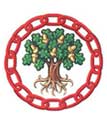Faculty Office Marriage Licences
Discover if your ancestors from England or Wales applied for a marriage licence between 1694 and 1850.
See description
Discover if your ancestors from England or Wales applied for a marriage licence between 1694 and 1850.
Learn about these records
Each record is a transcript.
You can order copies of the original documents from the Society of Genealogists for £15 including postage. Upon receipt of your payment, the Society of Genealogists will locate, copy and send you a copy of the record you are interested in within 14 days. See Useful Links & Resources.
The amount of information listed varies, but the Faculty Office Marriage Licences records usually include a combination of the following information about your ancestor:
-
Bride name
-
Groom name
-
Year
-
Licence date
-
Year of birth
The indexes have been compiled by volunteers from the Society of Genealogists using copies of the old 19th century calendars of the records. The indexes are strictly finding aids for the original allegations held at Lambeth Palace Library and copies on microfilm at the Society of Genealogists. The original entries should, therefore, always be examined.
It is estimated that about 2-3% of marriages in England were by a licence issued by the Archbishop of Canterbury during 1694-1850. The issue of a Marriage Licence Allegation, however, does not prove that the marriage actually took place.
A marriage licence allegation was a document sworn by one of the prospective parties, usually the groom, to the effect that there was no impediment to the marriage and where the marriage could take place.
Many ecclesiastical bodies had the right to issue marriage licences, many at archdeaconry and diocesan level. In theory a licence should be issued by the office, which had jurisdiction over both parties. If a couple lived in different dioceses in the Province of Canterbury then the licence should have been issued by the Vicar-General. If they lived in different Provinces (e.g., Canterbury and York) or overseas, then the licence should be issued by the Faculty Office. In practice, people often went to a higher office.
The Archbishop of Canterbury, through his Vicar-General, issued common licences for couples to marry in any parish church or chapelry in the province of Canterbury, which dispensed with the calling of banns on three successive Sundays. Until 1753, the Vicar-General's Office also granted relatively few special licences which allowed parties 'to marry at any meet and convenient place', generally a college chapel or nobleman's private chapel not normally licensed for marriages. From 1753 special licences could only be obtained through the Faculty Office.
